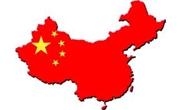Trade Cases

China Minister Comments on US and EU Trade Cases
Written by Sandy Williams
May 10, 2017
China’s Ministry of Commerce called the initiation by the U.S. of antidumping investigations on imports of cold-drawn steel mechanical tubing from China and five other countries “excessive,” in comments made on Thursday.
Wang Hejun, head of the trade remedy and investigation bureau, said he was concerned over rising protectionism from the United States.
“Under excessive protective policies, U.S. steel plants lack the motivation to make adjustments and are losing their global competitiveness. Trade partners will be harmed, and problems in the U.S. steel sector will still remain,” said Wang.
Wang said the frequent trade remedies and restrictions from the U.S. have caught the attention of the World Trade Organization. The United States should use caution and fairness in evaluating its trade case and create a stable and predictable environment for international cooperation in the steel sector, said Wang.
Wang also took issue with the final subsidy decision by the EU on imports of hot rolled coil to the region from China.
In a statement on the Ministry of Commerce site Wang said, “China strongly doubts the legitimacy of the decision of European Commission. China’s commercial banks coordinated with the EU’s investigation to the uttermost degree in this case, but the EU still ignores the fact of its independent market operation, affirming state-owned commercial banks as the ‘public organization’ and the loan provided to enterprises as the concessional loan. The EU even ignores the basic financial fact, regarding bank loan obtained by some state-owned enterprises as bestowment, creating high subsidy range deliberately, severely damaging the rights of the Chinese enterprises in this case.”
Wang urged the EU to conduct its investigation according to WTO rules and “amend its unreasonable adjudication as soon as possible.”
According to the State Council, China steel capacity has been reduced by 31.7 million tonnes to date, about 63.4 percent of its annual target.

Sandy Williams
Read more from Sandy WilliamsLatest in Trade Cases

SMU Survey: Less support seen for Trump tariff policies
Meanwhile, an increasing number think it's too early to say whether the penalties are going to bring more manufacturing to the US.

CRU: USW seeks exclusion for Canada from Trump’s tariffs
The union is also urging stronger enforcement against countries such as China which break trade rules, and a coordinated Canada-US strategy to protect union jobs across the North America

Price on trade: A lot happened last week – and it wasn’t all about tariffs
Should foreign investment be allowed to reshape the American steel Industry? Not to be lost in the recent on-again-off-again tariff frenzy, Nippon Steel’s proposed takeover of U.S. Steel has also found itself in President Trump’s crosshairs when it comes to trade and industrial policy. Nippon Steel initially announced its nearly $15-billion bid for U.S. Steel […]

Trump signs executive order aimed at making US shipbuilding ‘great again’
President Trump on Wednesday signed an executive order meant to breathe new life into American shipbuilding and curb Chinese dominance in the sector.

Trump still against selling USS to Japanese firm: Report
Despite ordering a new review of Nippon Steel’s bid for U.S. Steel, President Trump said he is still against selling USS to a Japanese company, according to media reports.
